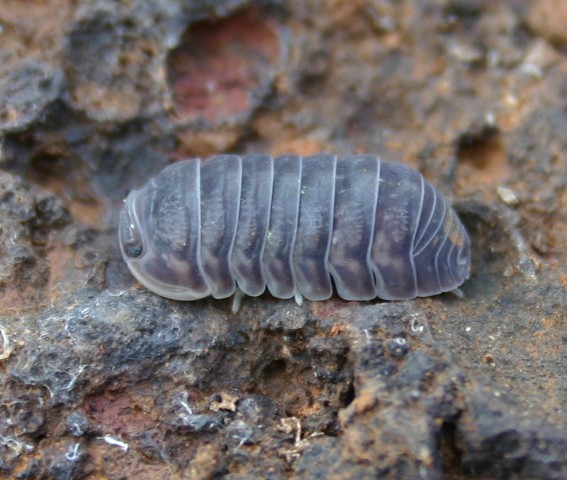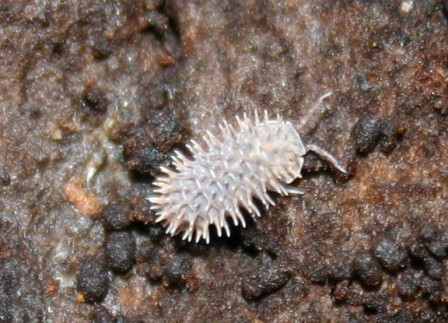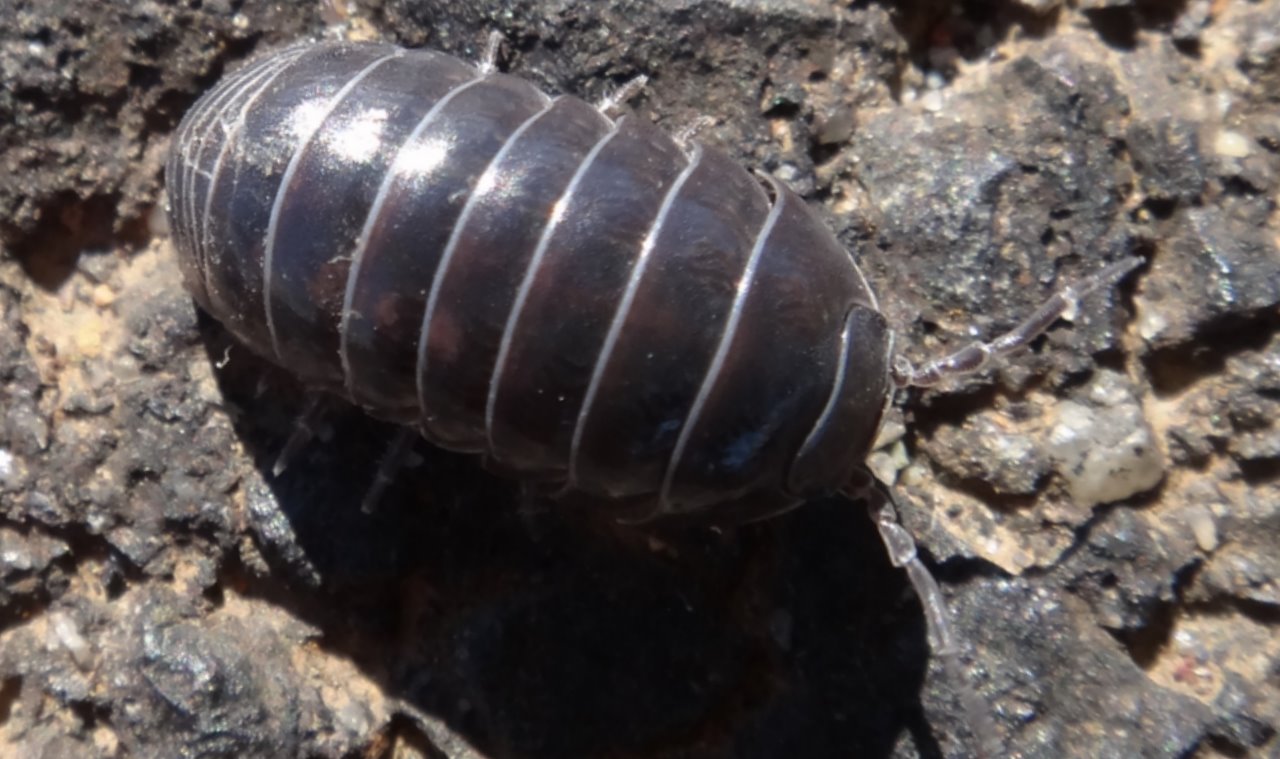Phylum Arthropoda
Subphylum Crustacea
Class Malacostraca
Order Isopoda
Common names: isopods, wood lice, slaters, pill bugs
Overview
Isopoda is a diverse group of crustaceans found in marine, freshwater and terrestrial habitats. Along with the Decapoda (prawns, crabs and crayfish), isopods are among the most morphologically diverse of all crustaceans. Although often described as �dorsoventrally flattened�, there are many exceptions with some being cylindrical, others laterally compressed and parasitic forms having various shapes. The most familiar isopods are the terrestrial slaters, woodlice and pill bugs. Isopods have sessile, compound eyes (if present), two pairs of antennae, and four sets of jaws. The first antennae are typically chemosensory; the second antennae are typically tactile structures. Isopods have a very reduced carapace and the first segment of the thorax is fused to the head. The remaining 7 free segments (pereonites) of the thorax each normally bear a pair of simple legs (pereopods), all very similar to each other. The pereopods are modified for locomotion and, in predatory species, for grasping prey. The abdomen consists of 5 free segments (pleonites) with the last abdominal segment, to which the uropods are attached, fused with the telson (or tail segment) to form a pleotelson. Each pleonite bears a pair of biramous pleopods, with flat membranous gills which are used for respiration and swimming in aquatic species. Terrestrial and freshwater species vary from white to dark gray, can be patterned and range in length from around 1�25 mm.
Distribution and diversity
Isopods are common inhabitants of nearly all environments across the globe and include approximately 9,000�11,000 described marine, freshwater and terrestrial species. The greatest diversity is found in deep ocean basins at 1,000�5,000 m depth. Almost all of the world�s 95 families are represented by numerous species in Australia, with around 1,000 described species and many hundreds more awaiting description.
Life cycle
Isopods moult in two separate stages with the posterior half moulting first followed by the anterior half some time afterwards. Females are receptive and mate after their first moult and fertilisation is internal. After mating, the anterior half moults and in most species a ventral brood pouch forms into which the eggs are laid and incubated until after hatching. When isopods hatch (manca) they look very similar to the adults but have 6 rather than 7 pereopods. A few species show some degree of maternal care after hatching.
Feeding
Isopods may be scavengers, herbivores, omnivores, filter-feeders, free-living predators or parasites. Food items include phytoplankton, algae, young leaves of plants, roots, fruits, animal carcases and small invertebrates. Herbivores typically have grinding mandibles and those that eat wood are able to digest cellulose using the microflora in their gut. Many are camouflaged, grazing on plants and algae they live amongst. Predatory isopods capture their prey with their front legs and typically have cutting mandibles.
Ecology
Freshwater isopods occur in a wide range of habitats including lakes, rivers, streams, underground waters, thermal springs, caves and water-filled bromeliads and pitcher plants. Members of the suborder Oniscidea (slaters, etc.) is the only large group of Crustacea that is truly terrestrial. Both terrestrial and freshwater isopods typically have cryptic life styles, living in dense algal or plant growth or leaf litter. Terrestrial species can become a garden pest when in large enough numbers and typically attack seedlings, leaves and fruit close to the ground. Isopods constitute a major component of the energy cycle in both aquatic and terrestrial food chains being herbivores, predators, parasites, and detritivores. They are also an important food source for other invertebrates, fish, reptiles and birds.

Isopod from Mt Gibson, Western Australia
Image credit: Photographer: Mark Harvey
� Western Australian Museum

Pseudolaureola from Walpole, WA
Image credit: Photographer: Mark Harvey
� Western Australian Museum









